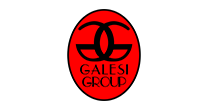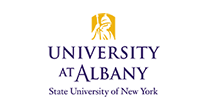News
June 24, 2015Online Exhibition Provides Access and Context to Famous Hudson River School Movement
The Making of the Hudson River School now available via www.AlbanyInstitute.org
ALBANY, NY– “What is the Hudson River School?” is the frequently asked question that prompted the Albany Institute of History & Art to present the exhibition The Making of the Hudson River School: More than the Eye Beholds in 2013. Popular with Capital Region residents and tourists alike, the exhibition featured 96 works from the Albany Institute’s collection of Hudson River School paintings, drawings, prints, and historical documents, along with 38 works from several private collections that had not been shown before in a public exhibition. This exhibition, which highlights such a key component of New York State’s history and the history of American art, has been digitized and is now available as the museum’s first online exhibition, bringing the story of the Hudson River School to greater audiences.
The Hudson River School refers to American landscape painting created between 1825 and roughly 1875. It was not an actual school, but rather a group of artists who mainly lived and painted in the Hudson River valley of New York. They frequently knew one another, went on sketching trips together, and exhibited their paintings side by side at exhibitions and galleries. The name Hudson River School was not used by the artists themselves, but came into general use in the 1870s, at a time when their style was losing popularity.
The Making of the Hudson River School: More than the Eye Beholds exhibition was designed at the same time that the Albany Institute was creating a more robust website that would share more of the museum’s collections via the internet. The Albany Institute of History & Art has a significant Hudson River School collection, which contains finished paintings as well as artists’ sketchbooks, studies, account books, letters, personal papers, and more. The exhibition The Making of the Hudson River School utilized the variety of the museum’s collections and combined these pieces with almost 40 works borrowed from private collectors that had not been publicly shown. Together, they revealed some of the major influences and historical happenings that helped shape the Hudson River School, including European traditions and cultural movements, as well as America’s natural environment and commercial spirit.
According to exhibition curator Douglas McCombs, “We had developed the capacity to host exhibitions on our website and we knew we wanted to share this exhibition with the diverse audiences that the internet reaches. Making of the Hudson River School includes works not offered in other exhibitions. This exhibition looks at trends and shows subject by subject analysis of the individual components that influenced these artists, like photography for instance. These topics will help web visitors better understand the Hudson River School and its significance.”
The Hudson River School emerged alongside the new medium of photography, the new science of geology, and new technologies that transformed travel and inaugurated an industrial revolution. These influences were discussed in sections in the physical exhibition and are now navigable online through the Albany Institute’s website, www.albanyinstitute.org/online-exhibitions.html. “The online exhibition replicates the exhibition we had on-site,” says McCombs. “Visitors are able to read the labels, view the artwork, and tour each section. We made a point to photograph the works that were on loan for the show and those are included as well. Plus, each image can be enlarged for closer viewing.”
Support for this online exhibition came from a grant from the Hudson River Valley National Heritage Area. The mission of the Hudson River Valley National Heritage Area is to recognize, preserve, protect, and interpret the nationally significant historic, cultural, and natural resources of the Hudson River Valley for the benefit of the Nation. Learn more on their website, http://www.hudsonrivervalley.com/Home.aspx
* * * * *
The Albany Institute of History & Art is located at 125 Washington Avenue in Albany, New York. Free parking is available in the museum’s lot at the corner of Elk and Dove Streets. The museum is open Wednesday-Saturday 10AM-5PM, Thursdays until 8PM*, and Sunday Noon-5PM. On Tuesdays, the museum is open to registered groups only. The museum is closed on Mondays and some holidays. *AIHA now offers free admission on Thursdays from 5PM-8PM.
Admission is free for Institute members; $10/adults; $8/seniors; $8/students with ID; $6/children 6-12; FREE/children under 6. Bank of America and Merrill Lynch card holders get free admission to the Albany Institute of History & Art on the first weekends of the months that Triple Play! Baseball at the Albany Institute is open (February through July 2015). This is part of Bank of America’s Museums on Us program. You can learn more about this program on their website, http://museums.bankofamerica.com/.
For more information, visit www.albanyinstitute.org or call (518) 463-4478.
Founded in 1791, the Albany Institute of History & Art is New York’s oldest museum. Its collections document the Hudson Valley as a crossroads of culture, influencing the art and history of the region, the state, and the nation. With more than 35,000 objects and one million documents in the library, it is an important resource for the region, giving our community a sense of the part the Hudson Valley played in the American story, and our own place in history. Permanent and temporary exhibitions are open year-round and create a sense of place, allowing visitors to meet the people who helped shape this region. Over 25,000 people visit the Albany Institute of History & Art every year, enjoying the collections, workshops, school programs, and lectures, helping to build an understanding of the history and culture of our region. Among the museum’s best-known and most-loved collections are the 19th century Hudson River School landscape paintings by artists like Thomas Cole and Frederic Church, the 19th century sculpture collections, and, of course, the famous Albany Mummies that came to the museum in 1909 and have been on view ever since. For more information, please visit www.albanyinstitute.org and be sure to follow us on Facebook (www.facebook.com/albanyinstitute) and Twitter (@AlbanyInstitute).
























